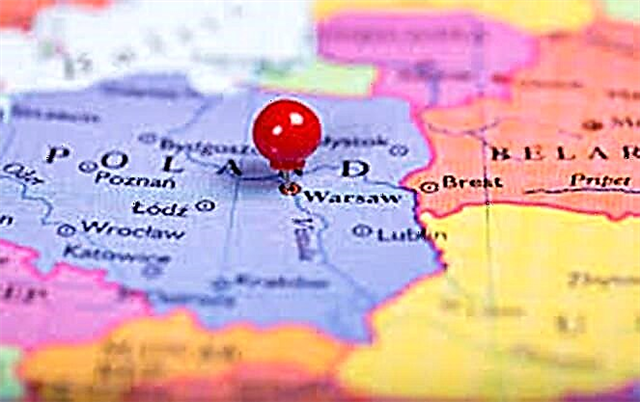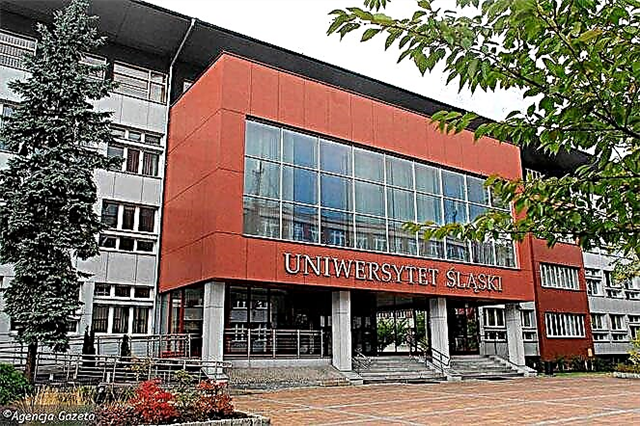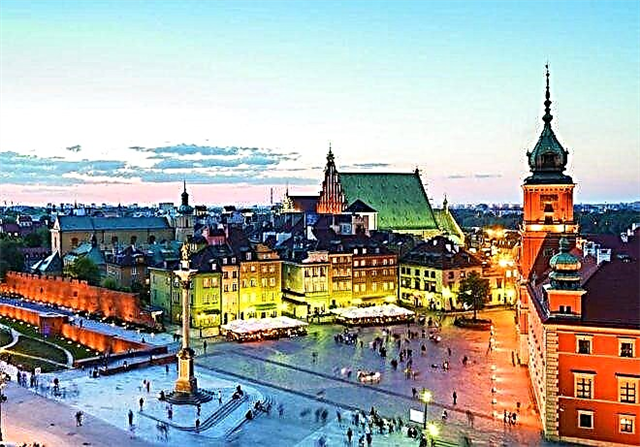Warsaw's continental climate attracts a large number of foreign tourists all year round. Mild winters and warm, cool summers create the best conditions for exploring local attractions and long walks in the capital of the Republic of Poland. Let's consider what the weather is in Warsaw by months, the peculiarities of weather conditions by seasons, the climate of the Polish capital and the periods most favorable for visiting it.

Warsaw climate
The cool temperate climate of the capital of Poland with normal rainfall provides a comfortable average annual temperature of +7 degrees Celsius. Warsaw is located on the banks of the Vistula River, so there are no sudden temperature fluctuations.
On this part of the continent, continental air masses from the east meet with warm and humid Mediterranean currents. Winter temperatures rarely drop below -6 degrees, and no longer than 2 weeks.
Spring comes gradually, and autumn is usually long and warm.
The average night temperature in winter is -4 degrees, daytime - -1.3 degrees.
In spring, nighttime temperatures fluctuate around +9 degrees, and during the day the thermometer rises to +15.3.
Summer night temperatures are kept at +17 degrees, during the day the air warms up to +23 degrees.
Autumn nights delight with a moderate temperature - +6 degrees Celsius, and the days are quite warm to comfortably walk - the temperature rarely drops below +11.
Due to the low average humidity, temperature records are easily tolerated. Warsaw receives up to 680 mm of precipitation per year - the normal average for the continental climate zone.
Sunny days are considered days when the density of the cloud cover does not exceed 20%. As of 2021, the Polish capital pleases with the largest number of sunny days from July to October. In total, Warsaw has about 146 sunny and 219 cloudy days in a year.
Where to find the weather forecast
To prevent the vagaries of the weather from catching you by surprise, check the official forecasts shortly before your planned trip. You can find the expected weather for the next two weeks and even a month on Polish websites.
Some of the most popular and reliable are the colorful http://www.meteoprog.pl/pl/, which gives a forecast for 15 days, laconic https://pogoda.onet.pl with forecasts for 14 days and a week. A detailed one is also available http://www.pogodynka.pl with detailed forecasts for 3 days and short ones - for 10 days.
Seasonal weather features
Although Warsaw is located in the continental climate zone, the local weather is seasonally and whimsical.
Summer
The warmest season, which coincides with the peak of the tourist flow. June is the wettest month with 70 mm of precipitation. It rains throughout the summer, but in general the weather is clear and warm.
The air warms up to +22 degrees, the wind is rarely stronger than 15 km / h. In the first month of summer, the daylight hours are the longest - 18 hours, so it gets dark closer to 22.00.
July in Warsaw is hot and humid, the maximum number of sunny days per year is 18 per month.
The absolute temperature maximum can reach +32 degrees. The heat is quite noticeable due to the high humidity (75%).
In August, the nights become longer and cooler, the influence of the eastern air masses is felt, under the onslaught of which the Mediterranean air begins to recede. Humidity and rainfall remain the same.
Autumn
Autumn is the most comfortable period for sightseeing. September is characterized by fresh mornings and warm sunny evenings. The temperature is kept within +20 during the day and +14 at night, rare fluctuations up to +25 degrees are possible. The number of sunny days decreases to 17 per month, the length of daylight hours becomes shorter - 13 hours.
October is characterized by low precipitation - 40 mm, comfortable daytime temperatures up to +12 degrees.
Rare warming up to +18 allow walking in light clothes. The relative humidity rises to 85%, so temperature fluctuations are felt more strongly. Daylight hours are reduced to 11 hours, cloudy days are increasing - 17 out of 31.
In November, day and night temperatures drop by 5-6 degrees relative to October, the number of sunny days decreases to 11 per month. Rainy days are receding and there is little rainfall - 30 mm. Humidity rises to 90%, and cloudy, chilly weather sets in the Polish capital. It starts to get dark around 17.00, the cool night lasts up to 15 hours.
Winter
Winter begins in Warsaw gradually, the season is characterized by comfortable temperatures ranging from -3 degrees during the day and -6 at night. In December there are thaws up to +2, humidity is kept at 90%.
There is little precipitation in winter, but fog often falls on the city, fresh cloudy weather sets in.
The number of sunny days in January is small: the sun is shown 1-2 times a month. Cloudiness is constant and dense; it begins to darken early - around 16.00. Cold snaps up to -12 at night are possible.

The most significant weather fluctuations are observed in February. The air can suddenly warm up to +10, bring thaw and slush, and at night the frost will hit -8 and turn snow streams into ice. The amount of precipitation during this period is minimal - only 20 mm, the average length of the day increases to 10 hours, and twilight comes later.
Spring
Spring warmth comes slowly, in March there are snowfalls, morning frost and ice on puddles. During the day, the average temperature rises to +6, humidity drops to 80%, and precipitation falls a little more - 30 mm per month.
During this period, a strong wind of up to 25 km / h blows with storm gusts. Daylight hours increase to 12 hours, and the number of sunny days increases to 12.
Those who did not have time to explore the spring capital of Poland in March can come in April. The amount of precipitation remains the same, but the humidity becomes 70% and the coolness is not felt so much.
The average night temperature is kept within + 6 degrees, during the day the air warms up to +16, the effect of the Mediterranean air masses becomes noticeable again.
In April there are fewer sunny days than in March - only 8, but you can walk until late in the evening, because it gets dark at 19.30.
The tourist season begins in May in Warsaw. At night, the temperature rarely drops below +12 degrees, during the day it ranges from +17 to +20. Average monthly precipitation increases to 50 mm, relative humidity decreases to 56%.
May pleases with sunny days (14 out of a possible 31) and late sunsets. Daylight hours last 16.5 hours, so it gets dark closer to 21.00.
Best months to visit Warsaw
The tourist season in the Polish capital lasts from May to October. During this period, a stable and comfortable temperature for walking is established, precipitation increases, but the relative humidity decreases.
Catch the high season, explore the popular Warsaw sights and resorts of the country, taste the local cuisine. If you visit during the cold season, be sure to visit the thermal springs in Poland.
Finally
The climate of Warsaw seems to have been created for tourists from all over the world to come to this city. Take the opportunity to explore the Polish capital in both high and low seasons to appreciate all the delights of the weather and attractions at different times of the year. Plan your trip and check the weather forecast ahead of time to bring home a pleasant experience.











